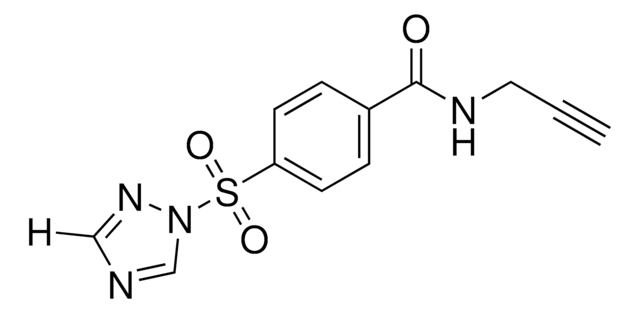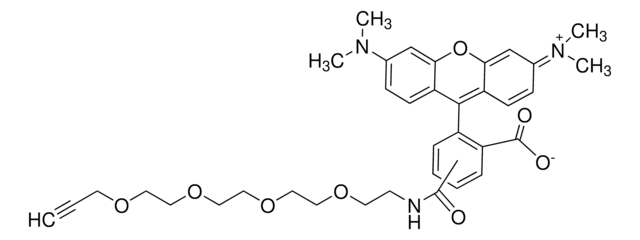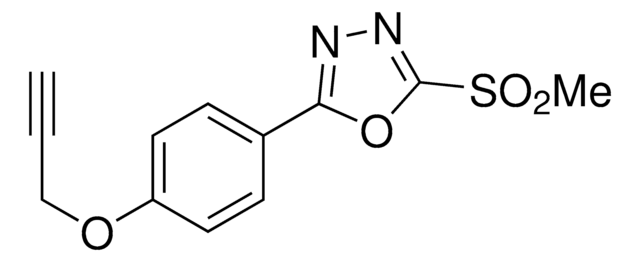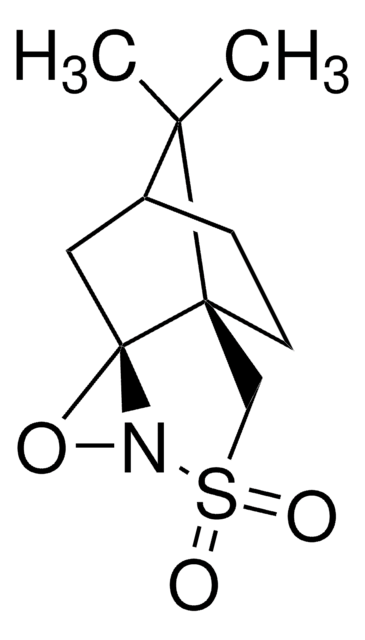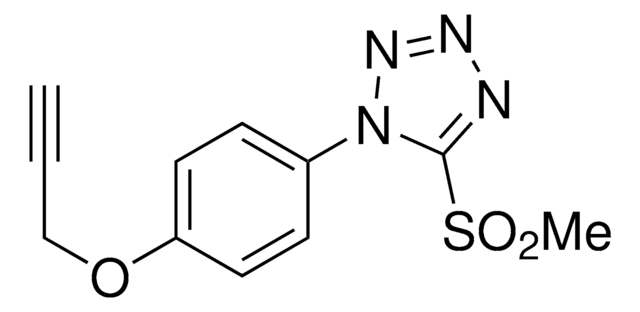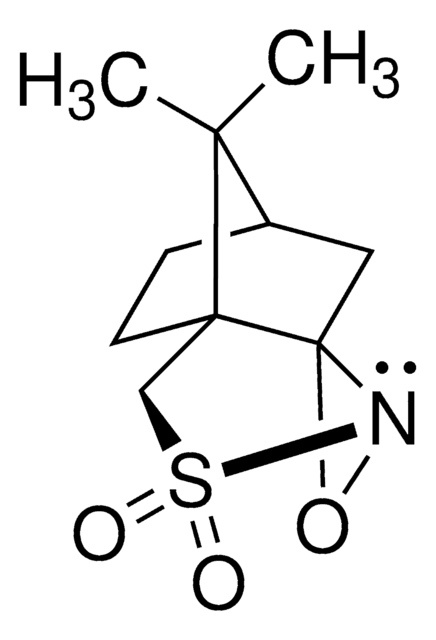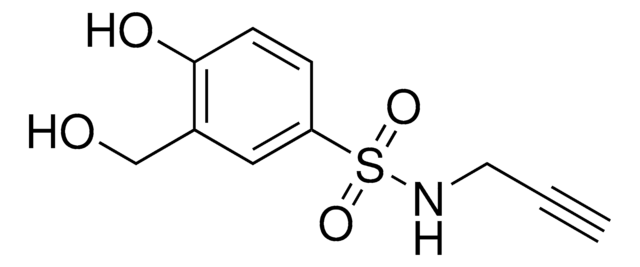930458
OxMet2-alkyne
Sinónimos:
(3-Phenyl-1,2-oxaziridin-2-yl)(4-(prop-2-yn-1-yloxy)piperidin-1-yl)methanone
About This Item
Productos recomendados
descripción
Application: Chemoproteomics
Nivel de calidad
Formulario
liquid
temp. de almacenamiento
−20°C
cadena SMILES
O=C(N1OC1C2=CC=CC=C2)N(CC3)CCC3OCC#C
Clave InChI
ZAZCIGLVVPPSLS-UHFFFAOYSA-N
Aplicación
Otras notas
A quantitative thiol reactivity profiling platform to analyze redox and electrophile reactive cysteine proteomes
Ethynylation of Cysteine Residues: From Peptides to Proteins in Vitro and in Living Cells
A Chemoproteomic Platform To Assess Bioactivation Potential of Drugs
Inhibition of Zinc-Dependent Histone Deacetylases with a Chemically Triggered Electrophile
Reversibility of Covalent Electrophile-Protein Adducts and Chemical Toxicity
Producto relacionado
Código de clase de almacenamiento
10 - Combustible liquids
Clase de riesgo para el agua (WGK)
WGK 3
Punto de inflamabilidad (°F)
Not applicable
Punto de inflamabilidad (°C)
Not applicable
Elija entre una de las versiones más recientes:
Certificados de análisis (COA)
It looks like we've run into a problem, but you can still download Certificates of Analysis from our Documentos section.
Si necesita más asistencia, póngase en contacto con Atención al cliente
¿Ya tiene este producto?
Encuentre la documentación para los productos que ha comprado recientemente en la Biblioteca de documentos.
Nuestro equipo de científicos tiene experiencia en todas las áreas de investigación: Ciencias de la vida, Ciencia de los materiales, Síntesis química, Cromatografía, Analítica y muchas otras.
Póngase en contacto con el Servicio técnico

